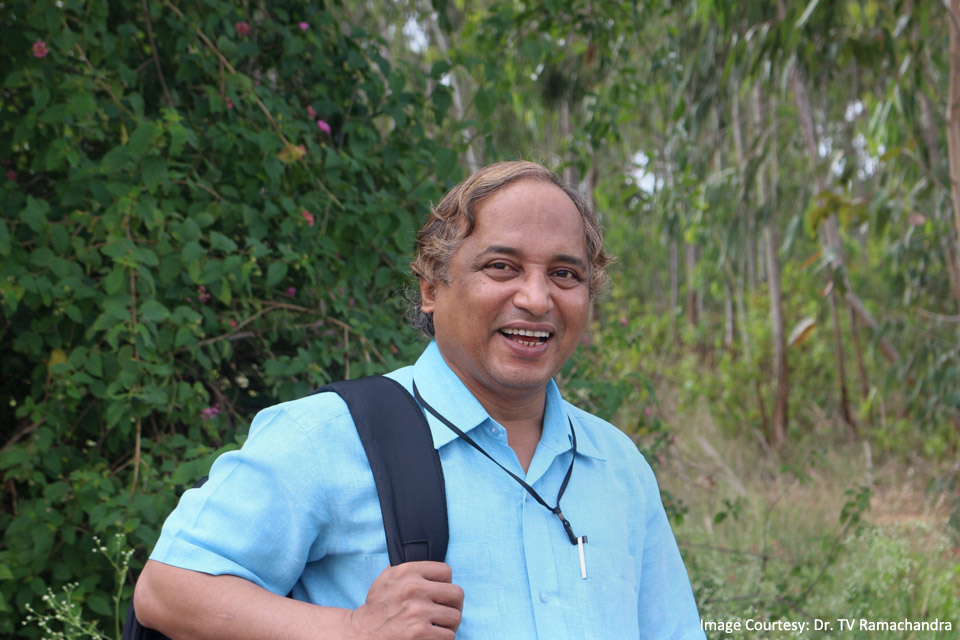
Recurring floods: Short-term solutions have long-term implications
Incessant rains and flash floods in Hyderabad over the past week, which led to flooding in several areas across the city, have claimed nearly 50 lives so far, but do we care to find a long-term solution to this recurring problem? Unfortunately, the answer is a big NO.

Incessant rains and flash floods in Hyderabad over the past week, which led to flooding in several areas across the city, have claimed nearly 50 lives so far, but do we care to find a long-term solution to this recurring problem? Unfortunately, the answer is a big NO.
Hyderabad and its adjoining areas recorded 200-300 mm of rain on a single day, marking it as the worst downpour in a century.
Though the rains subsided, several parts of the city continue to be in dark and knee-deep water. The India Meteorological Department has forecast more rains till October 21.
While experts blamed it on unplanned urbanisation and the pitiable condition of natural tanks and water bodies, the larger problem they highlighted was the inaction of subsequent governments on finding long-term solutions suggested by environmental groups and institutions.
The flash floods, be it in Mumbai, Hyderabad or in Karnataka’s Kodagu, Belagavi, Bidar and Bagalkote along the Krishna river basin over the past decade, raises concerns for the future.
While the ruling class focuses on immediate response by way of search and rescue missions to save human lives and provide relief immediately after the floods, the inevitable effort to take sustainable actions to avoid a future disaster are amiss.
“With the city growing by leaps and bounds, we need a sustainable solution. But all they (officials) do is just adopt ad hoc measures to cope with disasters,” T V Ramachandra, professor at Centre for Ecological Sciences at Indian Institute of Science, Bangalore, said. “What they do is a band-aid mechanism. We need integrated solutions and all the ministries and institutions to work together to mitigate disasters. Scientific research is happening. But the recommendations and suggestions are not implemented.”
Ramachandra fumes when asked about the government’s responses to the ecological research and suggestions made by the scientists and advisory groups at IISc and other prominent institutions.
“None of our suggestions are implemented. Neither are our research and scientific studies of value to them. The ruling class wants to keep the problem alive for their own benefit,” he said.
The Musi river floods in 1908, that reportedly killed nearly 15,000 people and destroyed about 19,000 homes, marked a watershed movement for the mitigation of environmental disaster for nearly a century. Thanks to Sir M Vishewaraya whose flood mitigation plan–construction of two big tanks above Hyderabad city to hold water from Musi and Esa river–worked wonders for decades.
1/14
The effect of the ongoing floods in Hyderabad, triggered by excessive rainfall events, has been amplified by the havoc played with the city's lakes and nallas.This thread attempts to explain why the havoc occurred. pic.twitter.com/Bu34xekFfm
— Pankaj Sethi (@PankajSethi00) October 19, 2020
Two more reservoirs in Osmansagar on river Musi and Himayatsagar on river Esa, built in 1920 and 1927 respectively under his aegis protected Hyderabad from floods until 2000s. Ramachandra says, “mismanagement in the environmental protection measures and disregard to suggestions of environmentalists led us to this situation”.
“We have not got a visionary leader like him (Sir MV) who can pick up problems and find long-term solutions. None of today’s politicians and bureaucrats thinks for the people,” he says.
Ramachandra’s anger stems from the fact that when Kodagu witnessed floods in 2018, he and his fellow colleagues at IISc, had suggested to contain deforestation and encourage growing location specific native species as they have the ability to hold soil. “Presence of native species means the streams are perennial. Our study found that farmers, whose lands were surrounded by native species, could earn Rs 154,000 from an acre while others could earn only Rs 32,000 during a cropping season. But till date, the government failed to act on our suggestion,” he says even as Kodagu faced floods in the subsequent years. “Today, most funds for afforstation are misused and they plant exotic timbers like acacia and eucalyptus which have no ecological value.”
He added that with global warming, the rain days have reduced from 45 days to about 10 days in certain places and that the intensity would remain high during those 10 days. “The floods in Telangana is nothing but mismanagement in Maharashtra and Karnataka’s western ghats,” he added.
Also read: Rain fury: IT hub pays the price for decades of neglect
In 2016, Ramachandra came out with a wetland research report and land use pattern for Bangalore city and said it was a dead city with unabated, unplanned and untenable urbanization. He even said the city would be “unlivable” by 2020. While the politicians disregarded his statement saying he was exaggerating, Ramchandra said he was only sending alarm signals so that the government wakes up to the real concern.
“Our Prime Minister went to Paris and spoke of decarbonisation. While we are doing that using renewable sources, we have not done much on afforestation,” he says. “The same government is weakening the Environmental Impact Assessment process. That is where I wonder whether these politicians have real concern for the people and to the future generation?”
He warns that we will see a severe water crisis and recurrence of floods in many places and says the governments need to protect the next generation. “There’s no point in increasing the country’s GDP if they cannot protect the environment and care for the next generation,” he adds.

